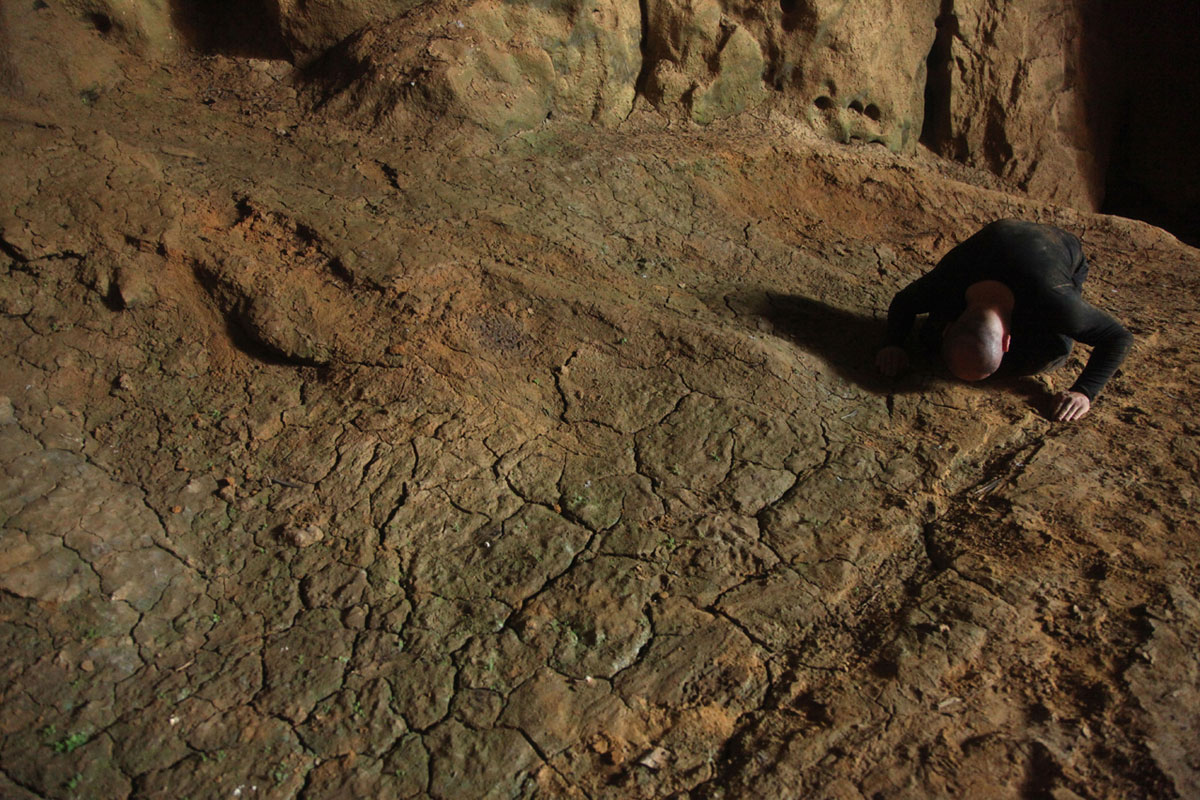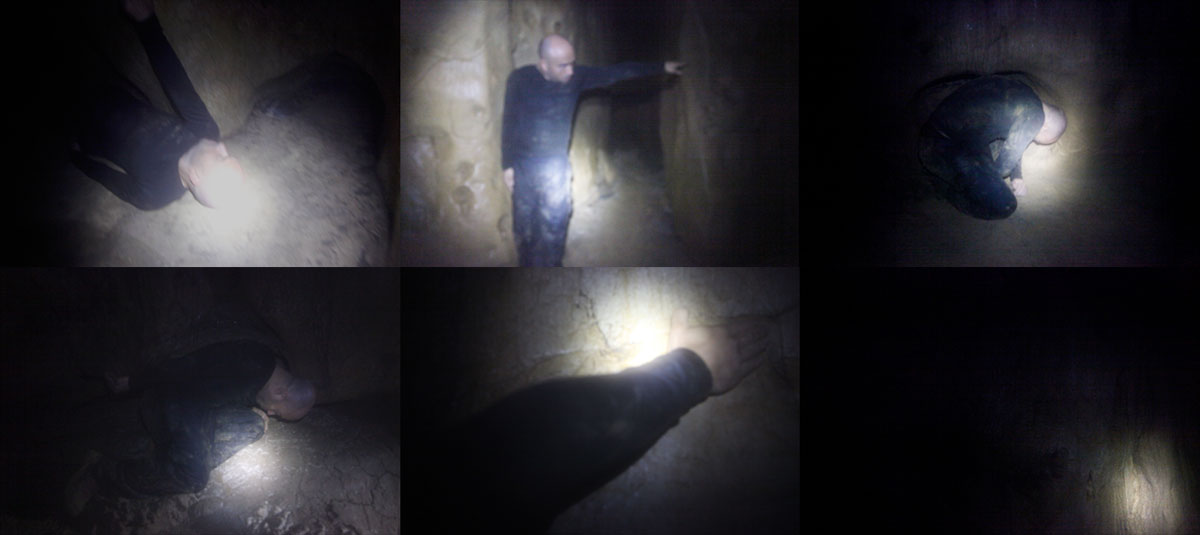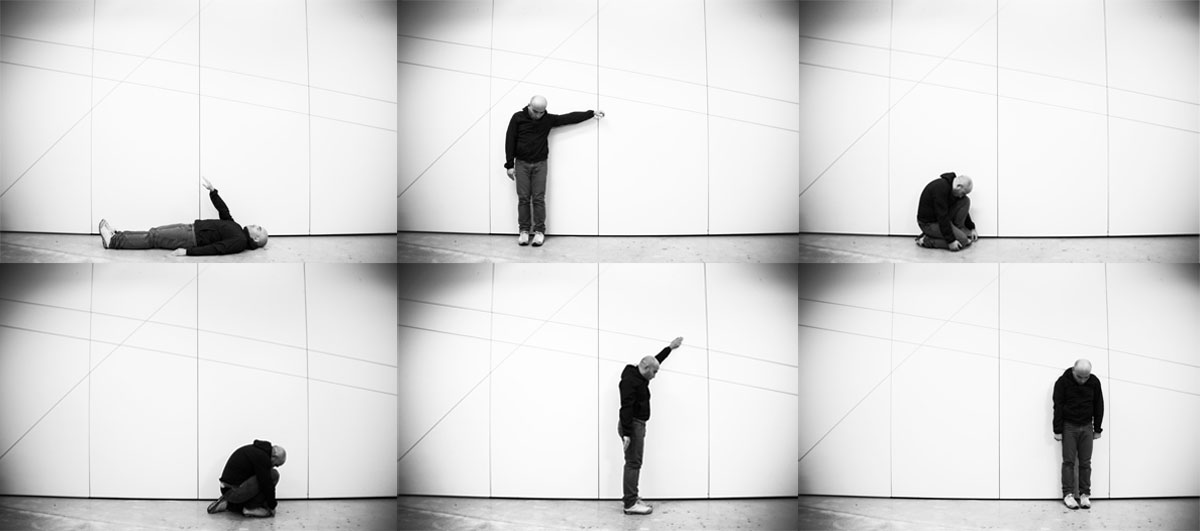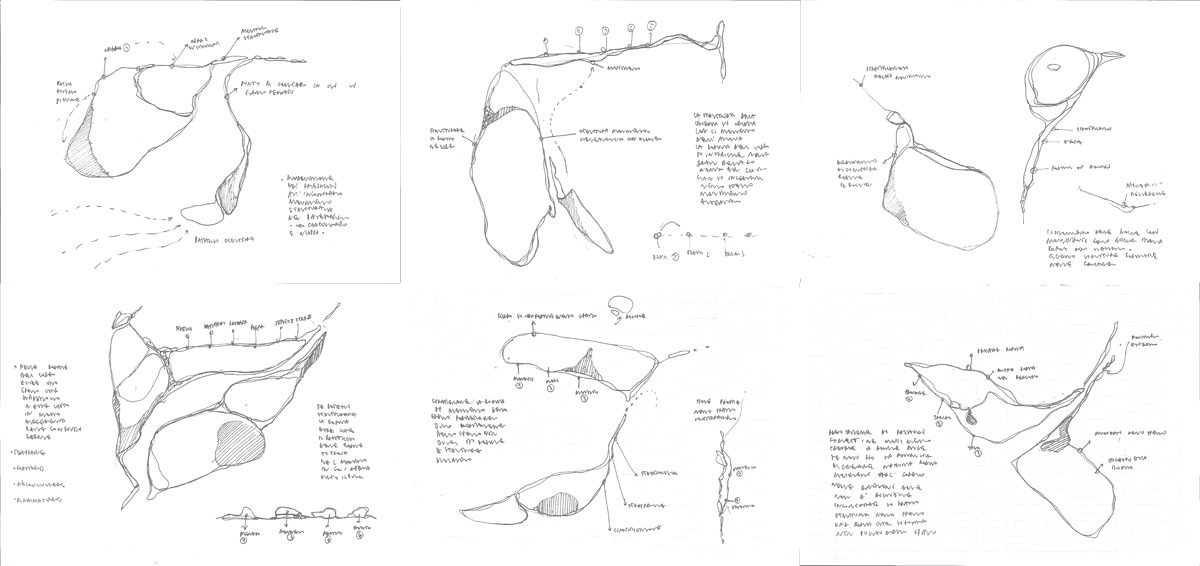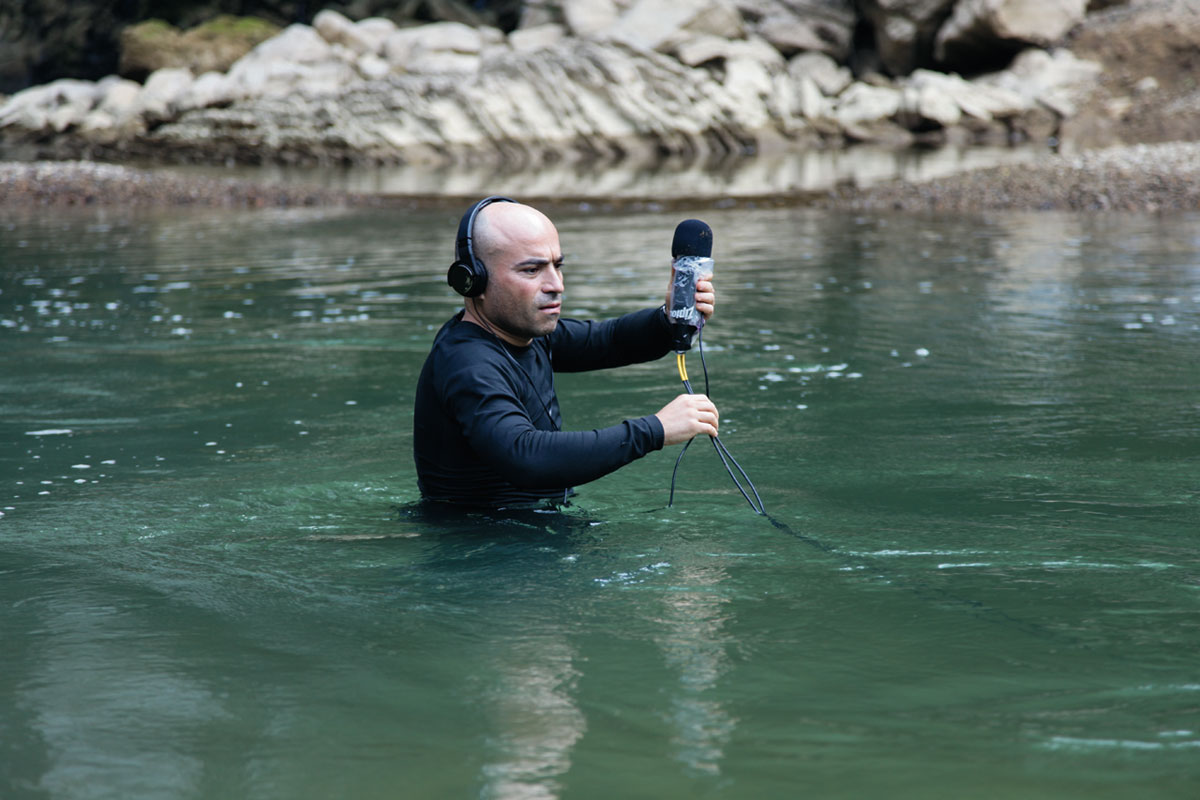Where am I? I am still and motionless. My body is crouched, I am on my knees. Silence. I listen to the space around me: the sound of the underground river overlaps with the drops that fall next to me, one after the other. The air is dense and moist. A musty smell penetrates my nostrils. I see a distant light in the darkness between the walls. Maybe it belongs to one of us, who slowly walk between the rocks. I remain motionless.
I am somewhere in the world. I am in a cave between the north and south of Vietnam. I do not care to know where I am, there is no map for these places. I am in a place off the map. There is no precise location, only my temporary position. I have no reference around me. There is only my body, waiting to move in the dark. I light the lamp placed on my head. I try to find a path, a way to reposition myself in the space. I cannot find one.
I decide to use my senses. I touch the walls. I listen to my steps that generate the echo in the spaces. The lamp illuminates some portions of the wall. I see small shining drops ooze from the wet stones. They are streaked, jagged, slippery. I observe the morphology of the rocks, their conformation is similar to anatomical folds. The walls are smooth, soft, like the folds of the skin of a body.
I begin to walk. I measure the distances between the rocks using my body as a measurement unit. I analyze the distances between the shadows and the tunnels that penetrate the walls. I walk, I stop, I observe, I analyze: whenever I find in the rock a form similar to my body, I position myself in it. Step by step, placing my body between the folds, each action becomes a measurement of space.
My body and the rock become the same thing: a hybrid anatomical texture, similar to an ancient fossil. One after another, my positions become an archive of places. My body becomes the tool to create a subjective map of the cave.
